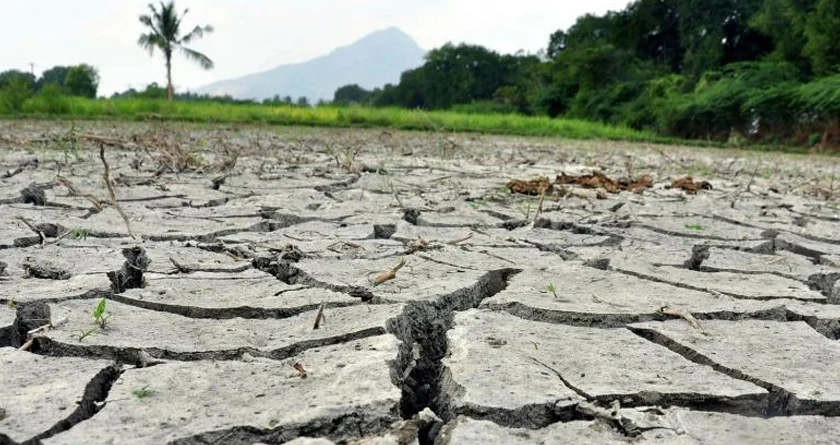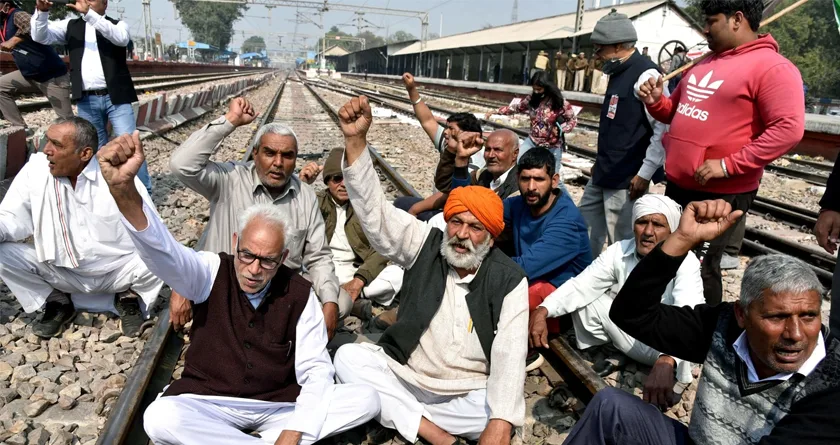
Land degradation in India hurts farmers and forest dwellers the most
Land degradation in India. Know more…
Friday, 3rd September 2021
Since approximately 30% of the geographical area has been affected, land degradation is undoubtedly one of India’s most pressing environmental problems. To make matters worse, in the past 15 years, almost every state in India has seen an increase in degraded land. Among them, Northeast State, which is rich in biodiversity, has the fastest growth. These details have been published in the "India Desertification and Land Degradation Atlas" released in August by the Indian Space Research Organization (ISRO).
The figures compiled for 2018-19 also highlight the severe challenges that India faces in achieving the goal of zero growth in land degradation by 2030 announced in the United Nations Convention to Combat Desertification in September 2019.
Currently, 97.85 million hectares (mha) of land has been degraded, which is 2.5 times the size of Rajasthan, India’s largest state. Among them, in the 15 years from 200305 to 201819, an increase of 3.32 mha, the area is 22 times that of Delhi.
However, the only positive aspect is that Rajasthan, the most degraded state, and Uttar Pradesh and Telangana have reduced their degraded land in the past 15 years. 4,444 Rajasthan, which accounts for nearly 22% of the country’s degraded land, has cultivated nearly 388,000 hectares, which is approximately 2.6 times the area of ??Delhi. During this period, Uttar Pradesh (285,665 hectares) and Telangana (19,974 hectares) jointly restored degraded land twice the size of Delhi.
Small victories in the three states failed to conceal the biggest problem of rapid national degradation, which negatively affected the lives and livelihoods of the most marginalized social and economic groups: farmers and forest dwellers who depend on rainwater.
Most productive land, the most vulnerable
As Down to Earth's analysis of ISRO data shows, more than half of the country's degraded land is rain-fed agricultural land, which is responsible for the country's food security or forest land that provides the best defense against climate change.
Reports that nearly 37 million hectares of degraded land are classified as rain-fed agriculture. Water erosion is the most common cause of farmland degradation without irrigation (80%), followed by wind erosion (17%), soil salinity (2%), and waterlogging (1%).
"Soil cover is the key," said G V Ramanjaneyulu, executive director of the Center for Sustainable Agriculture, a non-profit organization that helps farmers adapt to sustainable agricultural technologies.
In irrigated farmland, crops have always been covered, and in rain-fed areas, because the topsoil is exposed and easily washed away by rain, a lot of erosion has occurred, he added.
Although the problem is well known, Ramanjaneyulu said the solution is rarely mentioned. For many years, the country's agricultural policy has promoted "resource, chemical and energy-intensive planting patterns and practices", which have worked well on irrigated farms but are not sustainable on rainfed ones.
According to the "2020 Farm Statistics Pocket Manual" issued by the Agriculture and Farmers Welfare Union in May 2021, this is surprising because 66% of the country's farmland is still rainfed.
Instead, the country needs a separate policy to provide rainfed farms with best practices that suit them.
"After a major dust storm occurred in the 1930s, the United States introduced legislation that stipulated that the topsoil of any land should not be exposed. Therefore, it is normal to use mulch between two crops, because it not only helps the soil restore its nutrients but also helps protect the soil surface from erosion," he said.
In India, due to a large number of chemical fertilizers, The use of mulch or cover crops has decreased in recent years.
Forests are still the most degraded place after irrigated farmland. This is surprising because it is generally believed that afforestation activities are the solution to land The most reliable method of degradation.
According to the “Report on the State of Forests in India 2019” issued by the Ministry of Environment, Forests and Climate Change, India has more than 71 million hectares of forest.
The land degradation report stated that 30% or slightly more than 21 million hectares of forest land was degraded. He added that vegetation degradation (96%) is the main cause of forest degradation.
Degradation of vegetation due to deforestation and/or overgrazing is called reduced biomass and/or reduced soil vegetation cover. This degradation is an important factor leading to soil degradation, especially in terms of soil erosion and soil organic matter loss.
"Man-made pressure is reducing the quantity and quality of forests. Deforestation to meet various development needs is reducing the extent of natural forests. On the other hand, degraded drivers such as grazing, lack of natural regeneration, and short rotation periods are leading to the deterioration of growing populations in Indian forests, "said forestry consultant Ajay Saxena.
The News Talkie Bureau
Source:
Downtoearth











